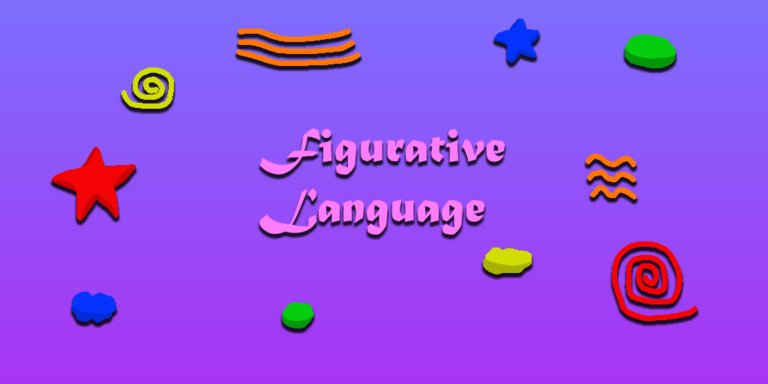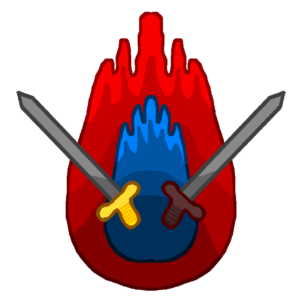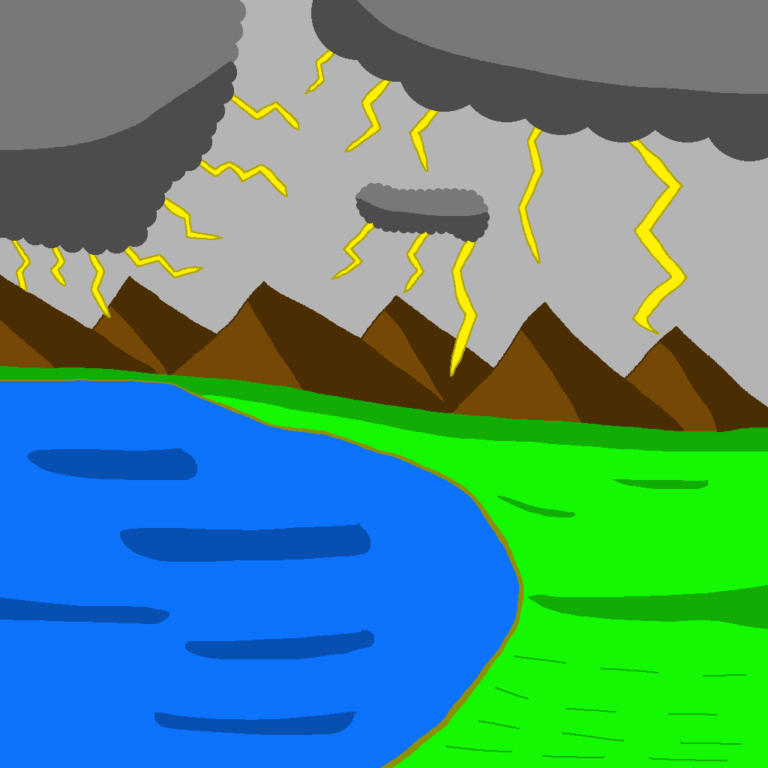Join US
Do you want to build the fantasy world you’ve always dreamed of?
Subscribe to receive notifications when a new post is out and for our monthly newsletter!
You can always unsubscribe anytime.


A novel isn’t about words that span hundreds of pages. It’s about the story these words tell. Numerous literary techniques are used throughout these pages, many of which help make it more rich and enjoyable for those reading it. It’s important that you utilize these techniques to great effect. Of these devices, we’ll show how using figurative language can help enrich the plot.
When using figurative langue, you need to remember that it’s merely using words that describe something, though not literally. It could be an idea, person, object, message, or something else. You give it an attribute that isn’t commonly associated with it, enabling your audience to visualize it in their mind.
Figurative language is a whole world in itself. It contains many things like personification, similes, metaphors, and so on. Knowing the building blocks of figurative langue is key to mastering it and implementing it in your novel in a way that gives your story a whole new meaning. It can be a bit tricky to grasp but once you get the hang of it, you’ll have a plethora of opportunities to use it to great effect!
If we took a deep dive into all of the things that figurative language is comprised of, this article would be quite long indeed so we’ll simply focus on just 2 elements in this article that you’re most likely to use in your tale. One of these, the simile, is a figure of speech that’s used to show a comparison between two things that aren’t typically used together.
The second element, the metaphor, is one you will rely on the most when it comes to using figurative language. A metaphor is a figure of speech where a word or phrase is used to describe something without it being literal. When creating your own fantasy world, it can be hard to come up with your own metaphors so it’s always helpful to look to the ones in the real world for inspiration!
This is the thirty-second article in the writing a fantasy book series. If you wind up enjoying this one and want more, go to our blog page. You’ll have no trouble finding something that catches your eye!
Figurative language is so crucial to creating a timeless story that it would be difficult to make one that your audience can’t get enough of without using it. Therefore, it’s essential that you, the aspiring author, understand how this technique works before you start applying it to the novel you’re working on.
As said in the previous section, figurative language is using a word or phrase to give something an attribute that most people don’t commonly use when describing it. For example, “Tom is as ravenous as a hippo” highlights how hungry Tom is, comparing his hunger to that of a hippo. Using figurative language in this manner creates a visual image in your mind that you couldn’t otherwise get.

There’s great power in using figurative language. You can describe a character, emotion, idea, physical object, or message. You can even use it with the setting or atmosphere. This gives you tremendous opportunities to come up with clever ways to use it in your story.
The magic of using figurative language is that you can use it in just about any situation. You can apply it to two characters in the midst of an argument or a character playing a prank on another one. You can even use it for when someone is doing an activity like sailing or cooking or an action like riding a horse or swimming.
Since you’re building a fantasy world from scratch, you want to shy away from using real world ones — unless your world is set in a parallel universe to Earth or is actually Earth. Instead, you have to compose your own. Take a look at the real world ones for inspiration and you can create your world’s version of them or craft ones unique to your story.
Even though there are a myriad of elements of figurative language, this article will explore two you’ll most likely incorporate in your tale. The first of the two is the almighty simile. It’s a versatile element which means you can easily use it in many situations.
The simile is quite similar to the metaphor though there is a subtle difference between the two. The former shows a specific and clear comparison between two things whereas the latter shows a comparison that is not conveyed plainly between two things. An example of a simile is “you’re as crazy as a fox.”
How do you go about using a simile? Take two things and provide a comparison between the two in a way that ties them together by using the words “as” or “like”, thereby making it easy for your audience to visualize it in their mind. Suppose one of your characters has golden hair. To describe it with a simile, you can go with “the color of her hair was like the sun”. See how your readers instinctively know she has yellow hair and can picture it easily in their mind without you explicitly saying it? That’s the power of a simile.

A simile can be used to describe a character, much like the example in the preceding paragraph. It doesn’t have to be about his physical appearance, it can also refer to his personality, age, even the style of clothes he wears! You can have great fun coming up with a memorable simile that your audience winds up liking!
When using figurative language, you can use a simile to give an attribute to an object. Besides how it looks, you can apply a simile to its texture or its color. An example of one in this vein would be “the rock was as coarse as sandpaper”. There’s no shortage of avenues you can use when describing an object!
Emotions are a popular choice to use similes. They enable people to easily understand what the characters are feeling at that particular moment, making it easier for the audience to relate to. Moreover, they evoke powerful imagery in their mind which can make an intense scene more powerful and stand out.
Much like the simile, the metaphor is one of the most popular aspects of using figurative language and is the second one we’ll take a look at in this article. If you need a refresher on what it is, it’s a figure of speech that describes something that isn’t literal but adds some context to it. An instance of a metaphor would be “Sue has cold feet on the day of her wedding.” It implies that she is nervous about getting married.
It’s easy to confuse metaphors with similes since there’s a lot of overlap between the two. Unlike the latter, the former is implicit in describing something and does not rely on the words “as” or “like” to describe it. As such, they help breathe life into things and help make your story a bit more vibrant.
If you’re creating a fantasy world of your own, it can be hard to make your own metaphors. Ideally, you want to make them work in the context of your world. By that, they need to not feel out of place, otherwise they won’t come off very well. Instead, have them fit the world they’re in.

One of the advantages of using a metaphor is that you can apply it to just about anything in the story. You can use it with a massive battle or sudden turn-of-events leading to a character’s downfall or someone clawing back into contention after being left for dead. There’s a treasure trove of metaphors you can come up with and sprinkle through your tale!
One benefit of using figurative language is that you can have weather as a metaphor for describing something else, whether it be the turmoil raging in someone’s heart or someone’s bright personality. Using weather as a metaphor makes it easy for your audience to picture it in their mind.
In the final analysis, using figurative language in your story will help it but you have to use it correctly. You definitely don’t want use it and have it come off awkwardly which will leave your readers scratching their heads at what you were going for. It’s even better if you combine figurative language with other literary techniques like the flashback.
There’s a whole wealth of information to know when learning about figurative language. As such, it’s important to have a clear understanding of the fundamentals before bringing it into your novel. You need to know the elements like the simile and the metaphor and how to use them to great effect.
This article only focuses on two elements and the first of the two is the simile. The beauty of this element is that it’s considerably versatile, meaning you have a whole bevy of things you can use it with! From characters to emotions, there’s no shortage of things you can use here! Just remember to use the words “like” or “as” when comparing something.
The second element, the metaphor, is a common feature of figurative language, appearing in pretty much everything. Much like the simile, you can apply a metaphor for just about anything, whether it be a character, a place, and so on. It helps create a powerful image in your readers’ minds.
Great writers use figurative language in creative ways, all of which help enrich their stories. If you’re not doing so, there’s no better time to start than now!
Let me know what you think in the comments below. (Note: this is an account-exclusive feature).
If you don’t have one, you can register here. It only takes a few moments of your time!
Liked this article and want to subscribe? All you have to do is fill out the form below and that’s it!
Thanks for reading this and until the next time,
Sunfire
Subscribing means you receive:
You can always unsubscribe anytime.
Do you want to build the fantasy world you’ve always dreamed of?
Subscribe to receive notifications when a new post is out and for our monthly newsletter!
You can always unsubscribe anytime.